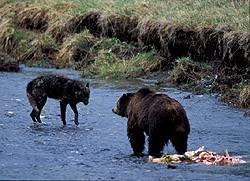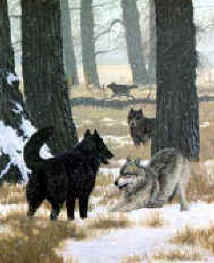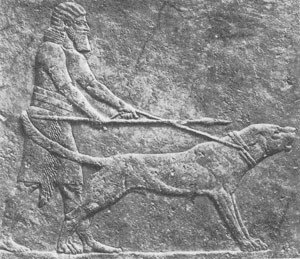The photo above is of a mass grave in the Bergen Belsen Concentration Camp. The camp was liberated by the British Army 70 years ago today on April 15, 1945, an act that is being commemorated in the news today.
NPR has the story of Bergen Belsen Through The Eyes Of Its Liberator. The Daily Mail has an article, Through The Gates Of Hell, that includes never before seen photos taken by British soldiers in 1945. Another article recounts the personal story of a survivor of the camp, "We Did Not Know The Horror To Come." Billie Halliday, a British expatriate, tells of the horrors he saw at Bergen Belsen in Langley veteran saw best and worst of humanity in WWII. Dennis Kilcommons, a journalist, discusses his own visit to Bergen Belsen forty years ago, an event that impacted on him in precisely the same way as my own visit there, discussed below, impacted on me.
Bergen Belsen was a spoke in the wheel of the Final Solution, Hitler's plan to exterminate the Jews in Europe. The method was to gather Jews and other enemies of the state into concentration camps run by members of Hitler's praetorian guard, the SS. Jews not murdered en mass in the camps were to be worked to death, forced to labor while on starvation diets.
The Third Reich's Final Solution resulted in the murder of six million Jews, an event the world would later label the Holocaust. There were others sent to these concentration camps as well to suffer the same fate as the Jews - Gypsies, Eastern Europeans, homosexuals, political prisoners and captured Soviet soldiers. Five million of them also died in the Nazi concentration camps.
Bergen Belsen Concentration Camp was located in north central Germany. It was one of the less notable of the Nazi concentration camps. The camp did not have a Doctor Mengele to conduct sadistic experiments upon the inmates. Nor was the camp the scene of mass execution in gas chambers like at Auschwitz. Murder on an industrial scale at Bergen Belsen was much slower, though by no means less cruel, horrific, or evil than at the other camps. At Bergen Belsen, murder was brought about by systematic starvation and disease allowed to run rampant.
When the British liberated Bergen-Belsen on April 15, 1945, they brought in film crews and photographers to document the living hell that they found. The War Office tasked famed director Alfred Hitchcock to turn the footage into a documentary that, only years later, was released to the public. The first half hour of the documentary deals with Bergen Belsen, the second half hour with other camps, as well as Nazi execution of prisoners in the face of advancing American and British troops:
I am not Jewish. I had studied World War II in school, of course, and I was well aware of the horrors of Nazi concentration camps. I had seen the pictures and read the stories of Dachau and Auschwitz. But, as a young man, the horror and revulsion I felt was purely on an intellectual level.
I wasn't even aware of Bergen Belsen until I found myself, two decades ago, driving past it while on assignment in the area. I had some time to spare, so we went into the site.
There was nothing left of the original buildings at Bergen Belsen by then. All of the camps buildings had been burned and leveled by the British in 1945. There were several buildings built on the site since to house memorials to the 70,000 Jews, Soviet prisoners of war, and other people who were murdered there. There were mementos in glass cases and thousands of horrible pictures lined the walls. It was indeed heartbreaking to see. And there were some exhibits given over to the most famous of the Bergen Belsen's victims, Czech painter and writer Josef Čapek and the sisters, Margot and Anne Frank.
At some point, I stepped outside the memorial buildings and began to wander about. I came upon a series of about twenty rectangular grass plots raised up about a foot off the ground, each neatly lined by brick. They varied in size, but the largest I recall was about maybe 9 or 10 yards wide by maybe 20 yards long. Each plot had its own plaque standing next to it.
I wandered over to one plot and read the plaque. I don't remember the exact numbers on that first plaque, but I remembered it said something like "7,000 people buried here." I wandered to the next plot and read its plaque, and so on and so on. The smallest of the mass graves held the remains of about 1,500 people; the most was over 10,500.
As I read the plaques at each of these tiny mass graves, that is when the horror of it all became real. That is when I fully comprehended the evil that was committed there, and was able for the first time to comprehend the magnitude of its scale. There were no more numbers written on pages of books or pictures on a wall. These were tens of thousands of people, murdered and tossed one on top of another into the smallest possible holes imaginable; tens of thousands of murdered people but a few feet below where I stood. Most were not soldiers, but simple men, women and children who had done no wrong; vibrant people with families, people with lives that could have enriched the world. That moment of realization has haunted me ever since.
What is evil? Moral relativists will say that there is no such thing as evil, but they are are naive fools. No one who visits Bergen Belsen can come away believing that. Evil is easy enough to spot, just hard to articulate. The dictionary defines it as "profound immorality, wickedness, and depravity." I think that close enough. I certainly saw that at Bergen Belsen and, there, for the first time in its presence, understood it.
I don't think many people truly do - understand evil that is. It is hard until you see it first hand and feel its effects on a visceral level. Many of the WWII generation who are now dying off understood this evil. Many of them saw it first hand. They ended the genocidal evil that was Nazi Germany. And famously, they said "Never again." We should all thank God that they did.
Enough.
Update: I had originally included here a "palate cleanser," video of an Auschwitz survivor, the now 90+ year old Adolek Kohn, and his family who returned to that worst of concentration camps and made a tongue in cheek dance video. The brilliant Robert Avrech of Seraphic Secret has informed me that the video is seen by some Auschwitz survivors as offensive. I have no desire whatsoever to offend any survivor of that particular hell. If you wish to see the videos originally posted, the dance video is here, and the back story of the man is here.
Evil cannot win unless we let it. The lesson of Bergen Belsen is that, under no circumstance can we let it. We would be well to remember that in our dealings with Iran, a country equally as evil and genocidal as Hitler's Nazi Germany.

















































3 comments:
Beautiful post. Thanks so much. I have to say that several Holocaust survivors with whom I'm close are deeply disturbed by the dancing on the ashes video. My friends feel that no matter what the intention, they are dancing on graves. No doubt, one's reaction to the dance is deeply subjective.
These are merely the consequences of something else, not evil in and of itself.
Much like the aftermath of Hiroshima's bombing, the effects are merely that.
Burning people down and getting rid of them in gas chambers, is the end result, but it has no effect on the intent. WHich is why people endlessly talk about good intentions. They think that if they control the dialogue on intent, the outcome will change as well.
Often times, the outcome is independent of the intent or at times is still negative no matter what people intended. The longer term consequences, those tend to be more objective and different.
Someone I know on Facebook -- her grandmother survived Bergen Belsen and with other survivors, wrote a book, and listed their numbers as the authors -- recently posted some nonsense in solidarity with the people of Gaza. I read her grandmother's book. I read it over thirty years ago, and remember much of it like I just read it last week. If I could find it, I should send a copy to her...
Post a Comment